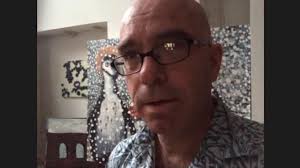Peter Pacheco is, in a certain sense, an outsider artist. He is no outsider to formal training or art history, but his artistic practice and impressive oeuvre, part of which is exhibited here at the QCC Art Gallery. He has been honed in private, in the evenings and days off from his job as a nurse in an intensive care facility in a public hospital, intentionally outside the gaze of the gallerists, critics, and collectors of the commercial art world in whose company many artists strive to be included. Peter, working in his studio on the top floor of the two-story post-war bungalow he shares with his partner, Avery, has crafted his unique painterly language and vision without regard for art world status.
This privacy has allowed Peter to develop a profoundly rich and complex body of work, but, as the artist acknowledges, his solitary practice has cut him off from the feedback loop central to art’s significance. As he puts it: art is meant to communicate, to speak to an audience. We are very fortunate to be able help complete the task of Peter’s paintings, to interrupt the solitude that has nurtured a vision which is private, yet speaks to universal human experiences of loneliness, terror, alienation and the sublime joy rendered by human perception, sensuality and connection.
Peter’s mother, Bessie, had an enduring influence on his personal and artistic development. An adventurous soul, especially for a woman in the 1950’s, Bessie was fascinated with American culture, jazz music in particular. She owned a small selection of albums (records were an expensive and coveted possession at that time, and Peter’s mother struggled to make ends meet). Peter and Bessie listened to Earl Garner, Ella Fitzgerald and the soundtrack from Carmen Jones over and over again throughout his childhood. Later, Bessie had a relationship with a drummer from Trinidad, who also turned out to be a kind of father-figure to Peter. He turned Peter on to the jazz greats of the Bebop era like Miles Davis, Charlie Parker, and John Coltrane. The sounds and feeling of that music, with their achingly beautiful riffs, syncopated rhythm and collision of order and frenzy infuse Peter’s paintings to this day.


